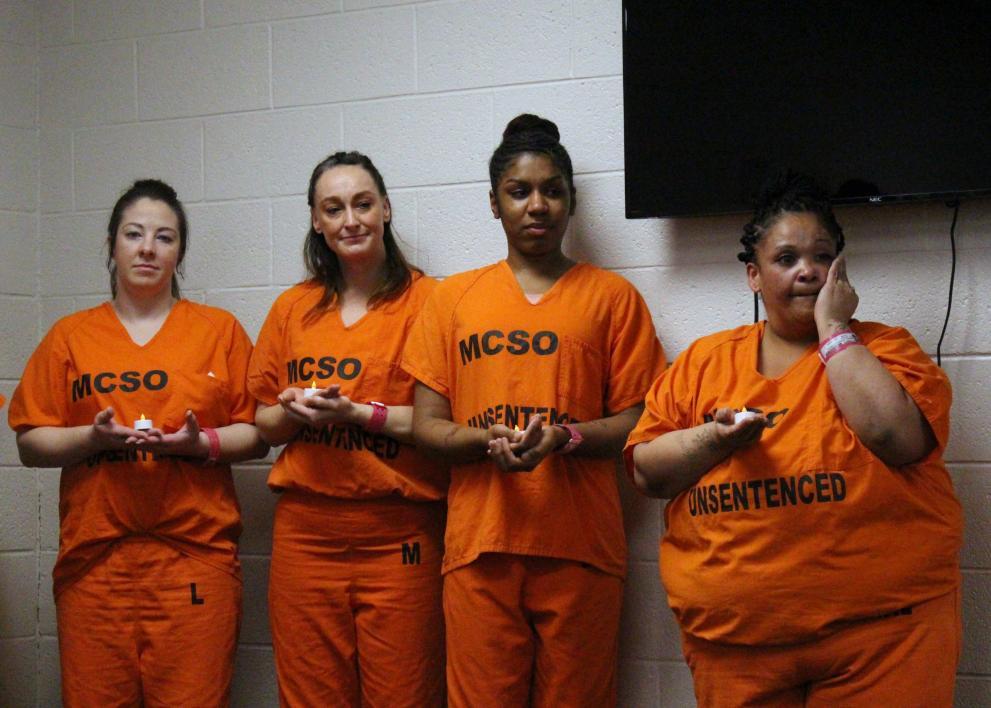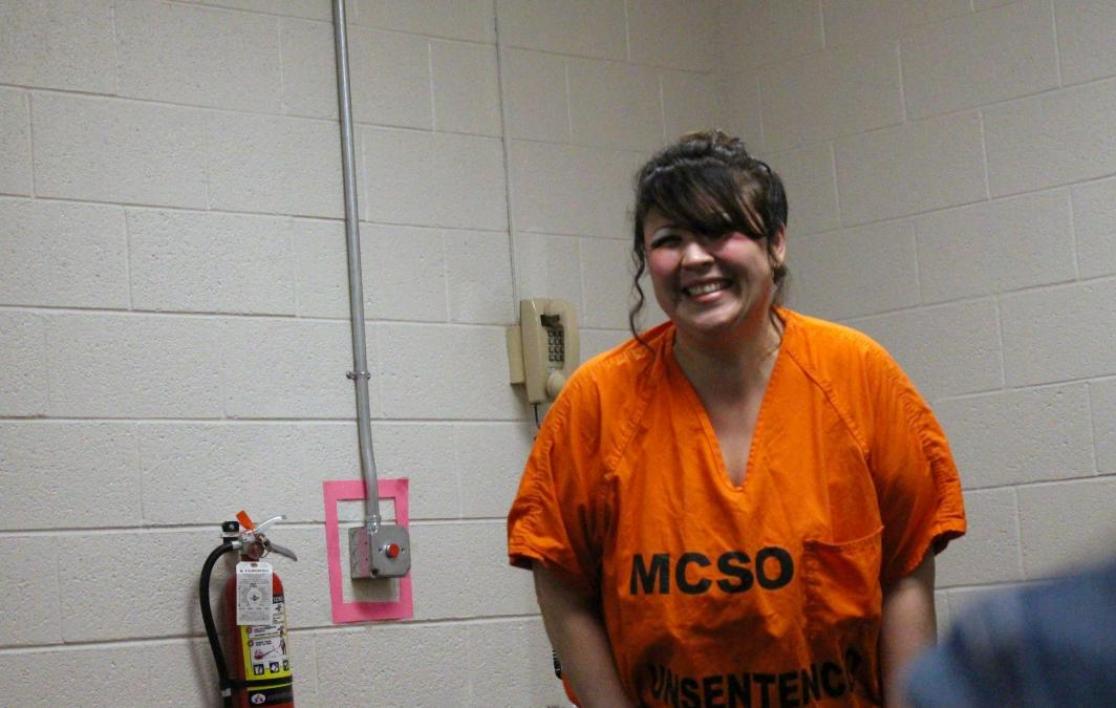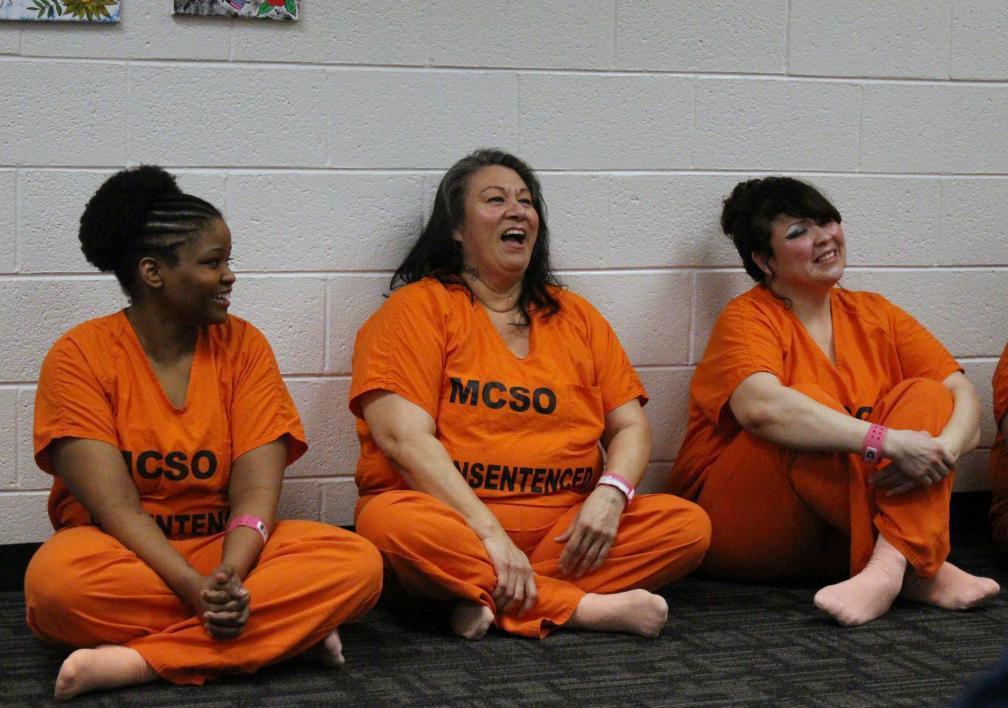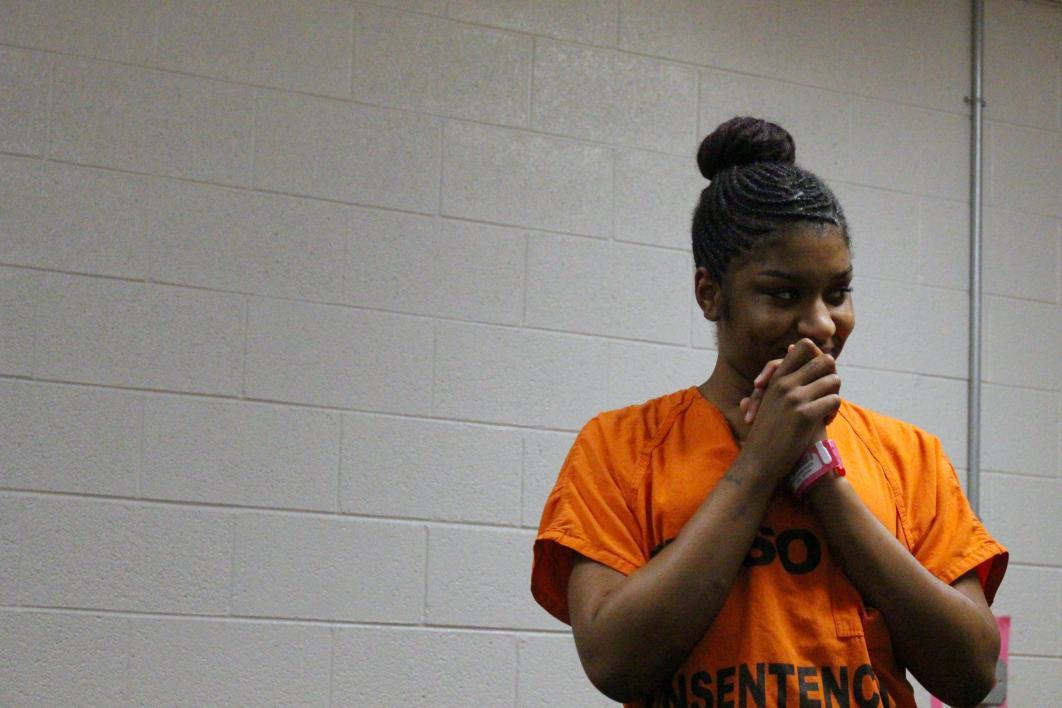Maricopa County inmates express themselves with art, storytelling in ASU Gammage’s Journey Home program
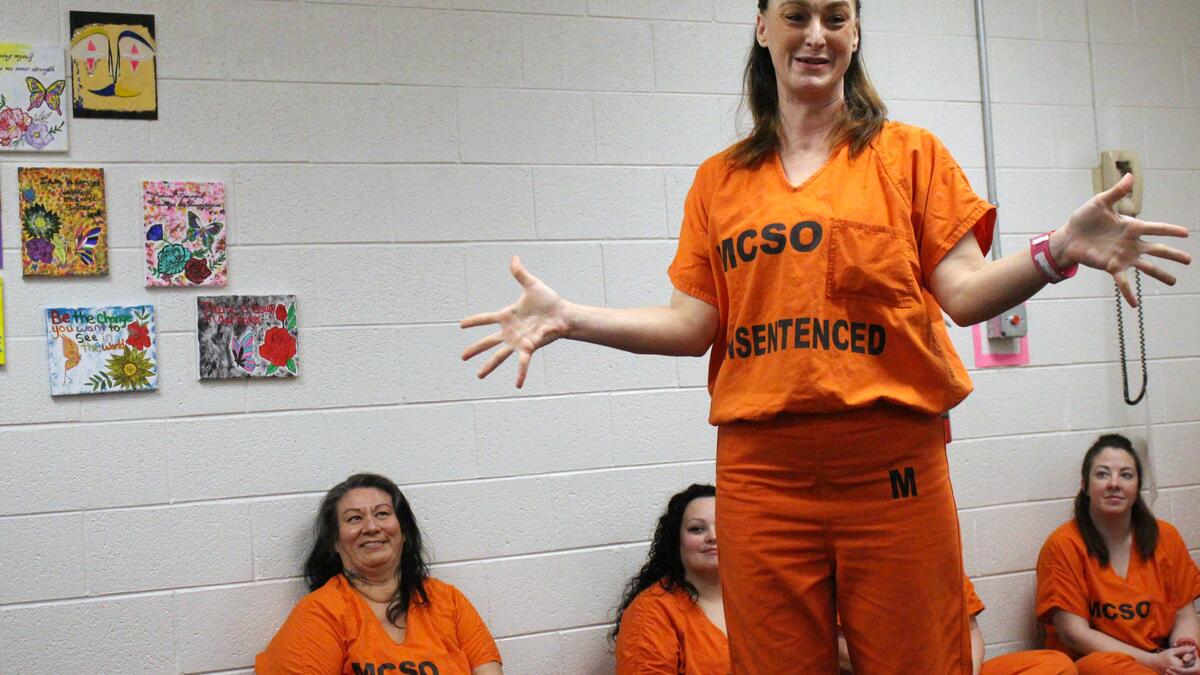
Sam, an inmate at Estrella Jail in Phoenix, presents a personal story at the Journey Home final performance on March 30. Photo by Alexandra Wolfe
A woman who was told she could never have children as she stood there four months pregnant. A woman whose dog sold her out to the police as she hid in a tree. A mother whose son asked her if she’ll remember him when she gets out in a year.
United through their storytelling and brought together behind bars, these women call themselves sisters. The various stories captivated the audience, triggering laughter, sadness, frustration and even happiness.
At the Maricopa County Sheriff’s Office Estrella Jail, a women’s jail in Phoenix, 11 out of 1,100 eligible inmates were selected to participate in this year’s ASU Gammage’s Journey Home program, titled “New Beginnings.”
Journey Home is an arts residency program designed to enable incarcerated women to discover a personal sense of constructive identity through performance, visual arts, creative writing and storytelling. In its 19th year, it exists as the only sustainable arts-integration program across Arizona’s correctional institutions.
“Our mission, which remains today at ASU Gammage, is connecting communities — and that's communities of all kinds,” said Colleen Jennings-Roggensack, executive director of ASU Gammage and ASU vice president for cultural affairs. “This was a community, the Estrella correctional facility, that was not being served, and we also deeply believed that art and culture could make a difference in the lives of the individuals here.”
Ultimately, Journey Home culminates in an emotional final performance of self-expression. The six-week program was directed by Fatimah Halim with movement and music by Teniqua Broughton.
At this year’s final performance on March 30, the walls were dressed in colorful canvas paintings of butterflies painted by the women — a symbol of how people can go through a great deal of darkness and still become something beautiful.
There is also a mental health specialist, Imani Muhammad, who helps the women communicate their thoughts and feelings.
“Imani helped me identify where some of this anger was coming from,” said Cynthia Rose Martin, an inmate in the program. “Once I got over that initial apprehension, I can't say enough about Journey Home. It brings you out of yourself; it brings you into yourself.”
An underlying purpose of Journey Home is to encourage rehabilitation. According to a study published by the Center on Juvenile and Criminal Justice, inmates who participate in arts-integration programs tend to have more self-confidence, motivation to pursue other programs and self-discipline with managing time efficiently. The study also determined that these inmates are more likely to face problems with creativity and intellectual flexibility.
Specific to Journey Home, many of the program’s graduates do not return to the jail system. In fact, one such graduate who was released from Estrella in the past year attended the performance and testified to the impact it has had on her new life.
“Why are we giving them a second chance?” said Capt. Jennifer Perks, commander of Estrella Jail. “Because these are women. They're valuable people that are at some point going to be entering our community again, so we have to look at our own relationship with our community and see what we want for ourselves.”
Perks said that it’s amazing to see the growth the women go through in such a short period of time, and that art has helped them take time to acknowledge their experiences and learn from them.
Erica Breeding, another inmate in the program, said that Journey Home has helped her think past the fact that she is incarcerated.
“That's all I could think about, is I'm confined, I'm in jail,” Breeding said. “And it's allowed me to open my mind to so much more to how I'm going to get through this and the present and then even in the future."
She also said that after her time is served, she will be a better mom for her children because she can teach them to learn from her mistakes.
“I went through everything that I went through, and it served a purpose,” Breeding said. “… I know to take nothing for granted anymore. Their smiles or their giggles. At any moment things can be taken away, so I will hold on to them a little bit tougher.”
Written by Alexandra Wolfe
More Arts, humanities and education

Honoring innovative practices, impact in the field of American Indian studies
American Indian Studies at Arizona State University will host a panel event to celebrate the release of “From the Skin,” a…

ASU alum's humanities background led to fulfilling job with the governor's office
As a student, Arizona State University alumna Sambo Dul was a triple major in Spanish, political science and economics. After…

ASU English professor directs new Native play 'Antíkoni'
Over the last three years, Madeline Sayet toured the United States to tell her story in the autobiographical solo-…
